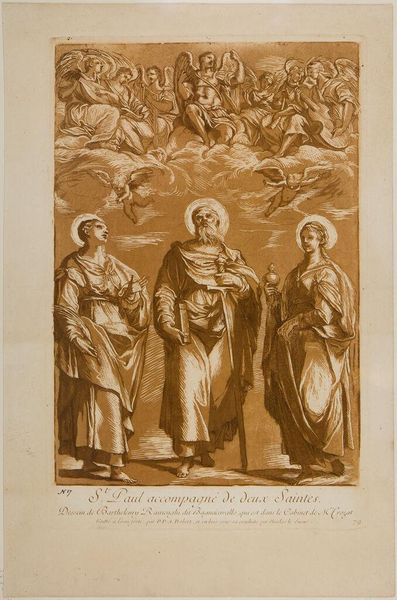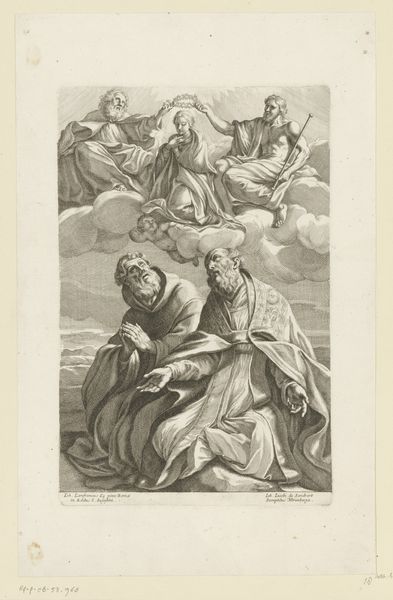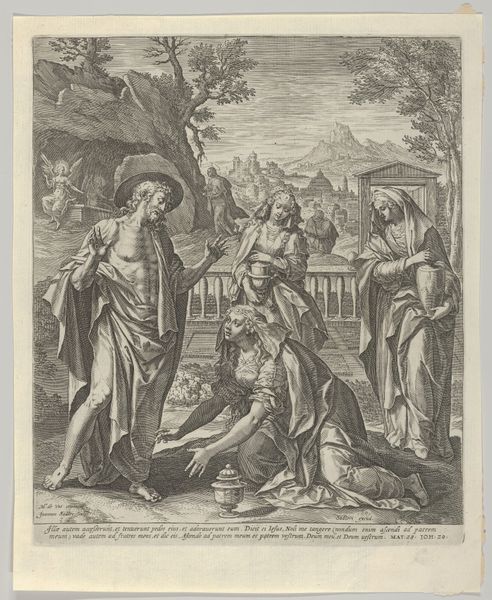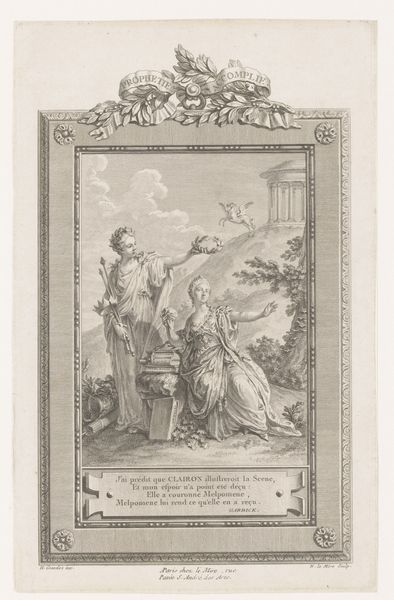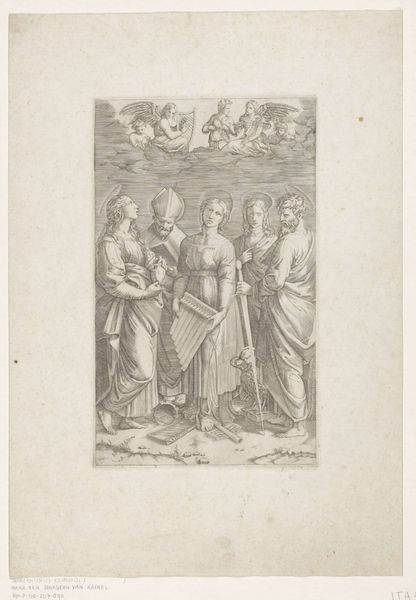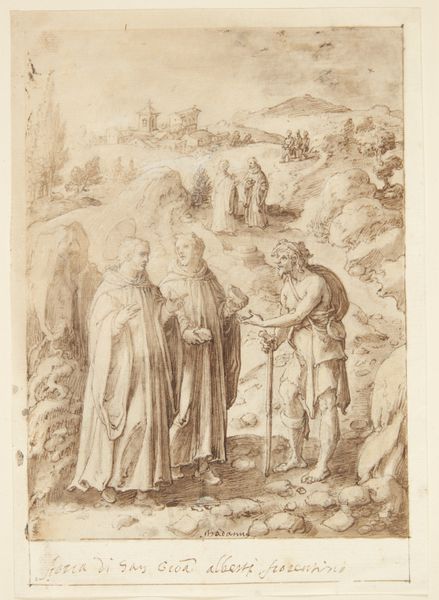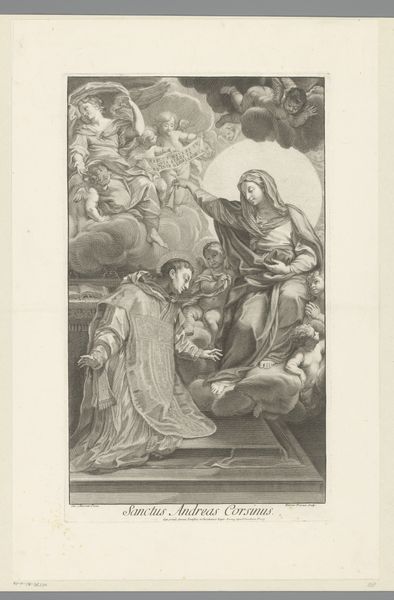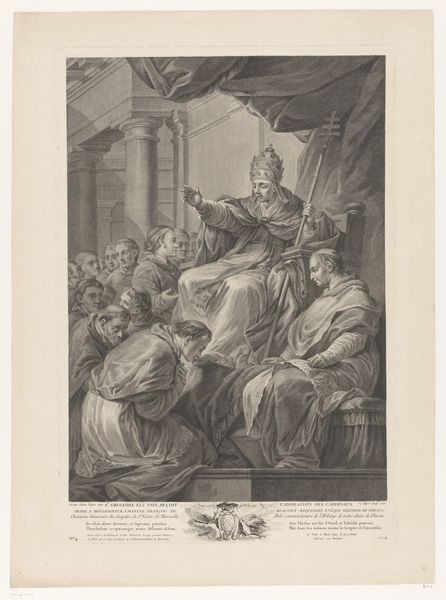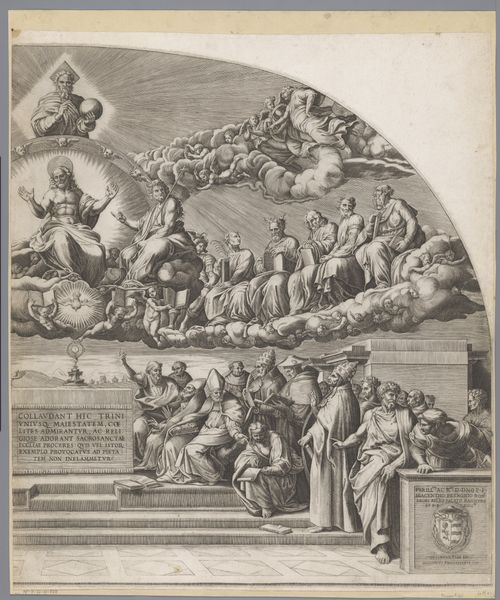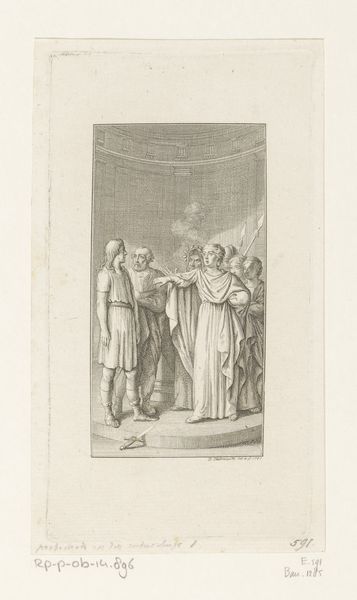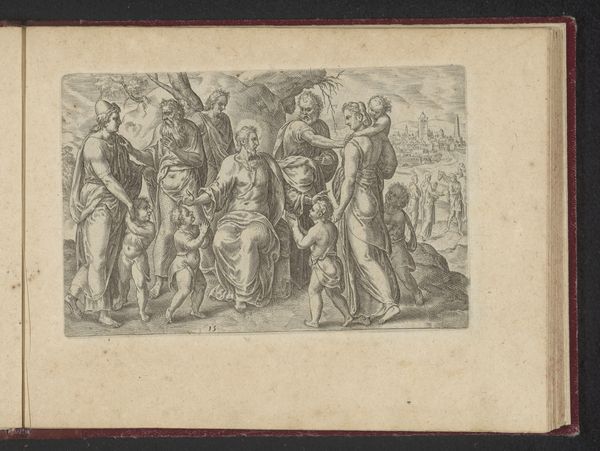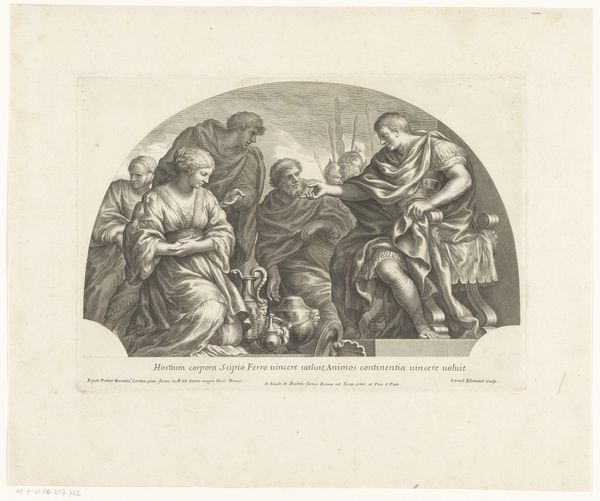
Saint Paul accompanied by two female saints with angels above 1724 - 1734
drawing, print, intaglio, pen, engraving
portrait
drawing
baroque
intaglio
figuration
coloured pencil
pen
history-painting
engraving
Dimensions: Plate: 16 7/8 × 10 13/16 in. (42.9 × 27.5 cm) Sheet: 20 7/8 × 15 1/4 in. (53 × 38.8 cm)
Copyright: Public Domain
Editor: This is “Saint Paul accompanied by two female saints with angels above,” a print made with pen, coloured pencil and engraving around 1724-1734. It feels like a very formal and staged image. The three figures stand so rigidly! What cultural forces were at play that led to such a presentation? Curator: The Baroque period, particularly in France, saw a consolidation of power in both the church and the state. Images like this, displayed publicly, reinforced hierarchies and idealized representations of sainthood. Note how St. Paul, centrally placed, literally and figuratively supports these power structures. Editor: So the image isn’t just religious devotion, it’s also a political statement? Curator: Absolutely. Consider who was commissioning and viewing this print. Were they private devotional objects or intended for larger public consumption in places of worship or even political gatherings? The style itself speaks to this grandeur - the heavy drapery, the soaring angels – it all aims to inspire awe and deference. Does that resonate with you? Editor: I do see it now! All that detail must have taken a really long time to produce and it signals wealth. Curator: Precisely. It also signals adherence to established norms and artistic conventions. The image is a powerful tool. It is not neutral but an agent in the circulation of Baroque sensibilities, religious ideology, and power. Editor: This definitely makes me think about art’s role in society much more critically. I hadn't considered that so directly when simply looking at it as a standalone object. Curator: Exactly. Art always exists in dialogue with its social and historical context. Thinking about that relationship makes looking a whole lot more interesting!
Comments
No comments
Be the first to comment and join the conversation on the ultimate creative platform.
